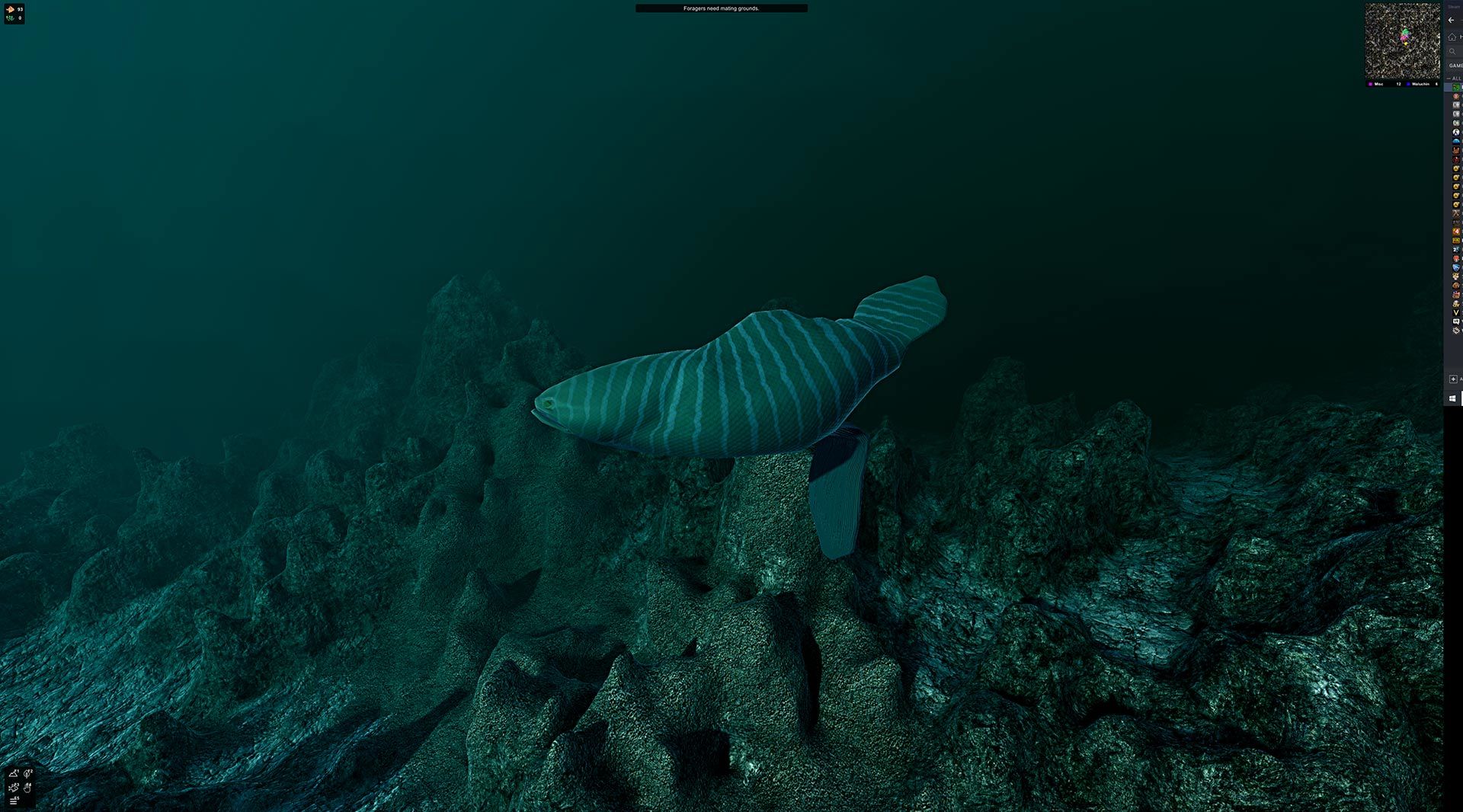
Ecosystem - Mike
Well, what can I say?
Thanks for all the excellent response Ecosystem has had for launch day! We think it went swimmingly if you'll pardon the pun; plenty of feedback to chew through and lots of fantastic suggestions and thoughtful points have already been posted by you lovely people.
Tom is aware of the forager placement issue that sometimes appears early in the game - that bug is number 1 priority and he hopes to get the first patch out to fix that specific problem very soon. After that, there's always a ways to go with early access with regards to optimisation and features, and these things will be constantly improved upon as the development continues.
Once the chaos of the game launch is over with and the initial feedback and issues have been worked through, we'll be publishing our first post-release newsletter which will include the first road map for the game going ahead. It's important to note that everything is subject to change during the early access period, and the game may evolve as much as its creatures do!
One of the points responding to initial feedback that needs to be reiterated, I feel, is that it's important to note that the simulation does not have any preordained animation in it, so creatures will usually only become very efficient swimmers, foragers and hunters after many generations. They start with entirely random brains and body sizes, go through an initial few generations of brain organisation to try to get some limbs moving, and then only after that does the evolution begin properly. They will naturally respond to pressures by process of natural selection, and an Ecosystem in which very little creature change occurs over a long time is probably stable one with few evolutionary pressures. Of course as development continues, new pressures will be introduced and existing ones will change.
It is likely that one of the major focuses of early updates will be better informational displays and allowing the player to put more constraints on the evolution of creatures, and it is possible that both of those may help if people feel like nothing is happening.
That's all for now - once again, thanks so much for your kind enthusiasm and with helping us get the word out about Ecosystem. Keep a weather eye out for that newsletter in a few weeks, and Tom expects to start getting updates out very shortly.
Thanks to Dreadwolff for the vivacious screenshot used in the artwork for this post!
Thanks for all the excellent response Ecosystem has had for launch day! We think it went swimmingly if you'll pardon the pun; plenty of feedback to chew through and lots of fantastic suggestions and thoughtful points have already been posted by you lovely people.
Tom is aware of the forager placement issue that sometimes appears early in the game - that bug is number 1 priority and he hopes to get the first patch out to fix that specific problem very soon. After that, there's always a ways to go with early access with regards to optimisation and features, and these things will be constantly improved upon as the development continues.
Once the chaos of the game launch is over with and the initial feedback and issues have been worked through, we'll be publishing our first post-release newsletter which will include the first road map for the game going ahead. It's important to note that everything is subject to change during the early access period, and the game may evolve as much as its creatures do!
One of the points responding to initial feedback that needs to be reiterated, I feel, is that it's important to note that the simulation does not have any preordained animation in it, so creatures will usually only become very efficient swimmers, foragers and hunters after many generations. They start with entirely random brains and body sizes, go through an initial few generations of brain organisation to try to get some limbs moving, and then only after that does the evolution begin properly. They will naturally respond to pressures by process of natural selection, and an Ecosystem in which very little creature change occurs over a long time is probably stable one with few evolutionary pressures. Of course as development continues, new pressures will be introduced and existing ones will change.
It is likely that one of the major focuses of early updates will be better informational displays and allowing the player to put more constraints on the evolution of creatures, and it is possible that both of those may help if people feel like nothing is happening.
That's all for now - once again, thanks so much for your kind enthusiasm and with helping us get the word out about Ecosystem. Keep a weather eye out for that newsletter in a few weeks, and Tom expects to start getting updates out very shortly.
Thanks to Dreadwolff for the vivacious screenshot used in the artwork for this post!










